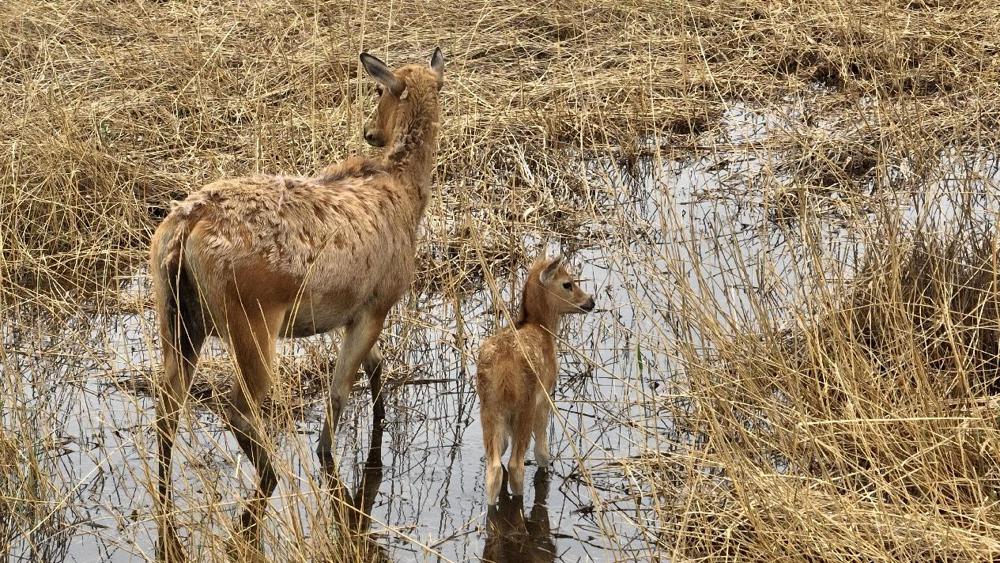Newborn deer in Ningxia wows visitors


A newborn Milu deer was recently observed enjoying its mother's grooming in a wetland nature reserve on the Yellow River's floodplains in the Ningxia Hui autonomous region, showing that the species is making a comeback in China's northwest.
The fawn, about 60 centimeters long and weighing roughly 7 kilograms, was discovered in the Qingtongxia reservoir area and promptly named "Youyou" after a line in the ancient Chinese poetry collection Shijing (Book of Songs).
"We saw Youyou playing happily with four other fawns," said Li Huimin, deputy director of the wetland conservation and construction management bureau. "This is more than the birth of a single deer, it's an important marker of Milu deer reestablishing themselves in Northwest China".
On May 12, five fawns with brownish-yellow coats speckled with white spots darted among the adult deer. Since Youyou's arrival on April 23, four more fawns have been born here. All are offspring of a 35-head herd that was relocated last year from the Dafeng Milu Deer National Nature Reserve in Jiangsu province.
According to Li, Milu deer once ranged widely across the Yellow River Basin and the middle and lower Yangtze plain. By the early 20th century, however, natural disasters and human activity had driven them to extinction in China. In 1985, China reintroduced 22 deer from the United Kingdom, and after nearly four decades of conservation work, the national population now exceeds 12,000.
In September 2024, a group of 35 deer was settled in the Qingtongxia reservoir. The reserve built a 200-mu acclimatization zone where, after six months of careful care, the herd not only survived its first winter in the northwest but also began breeding successfully.
"Monitoring shows that as of May 9, five fawns have been born to 24 does within the reserve," Li added. "The continuing births demonstrate that the population here is now sustaining itself through natural reproduction."
- Newborn deer in Ningxia wows visitors
- Folk song journey event attracts tourists to library
- Anti-corruption watchdog investigates death of Henan official
- China and Mongolia youths attend cultural exchange event in Beijing
- Chip-making company head sentenced to death for embezzlement
- America using Taiwan as its pawn becoming apparent





































